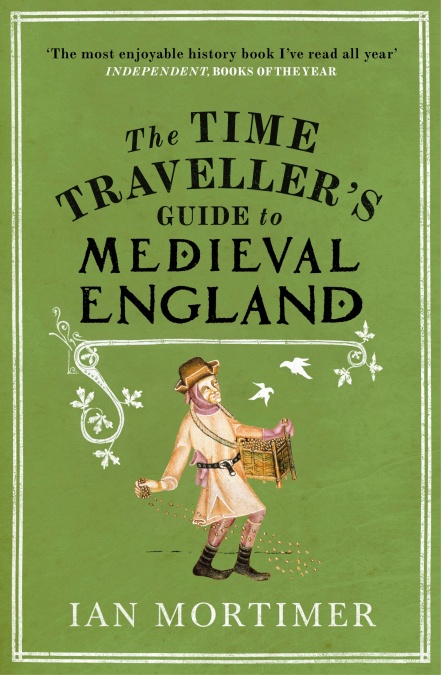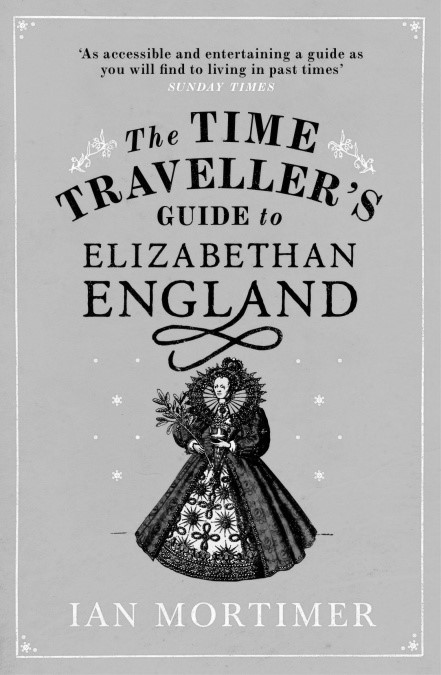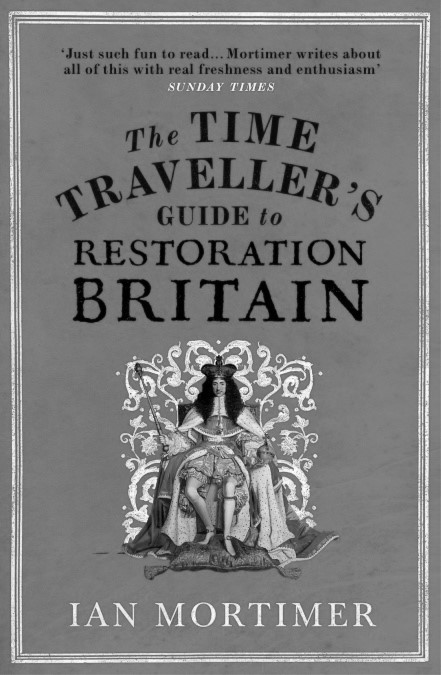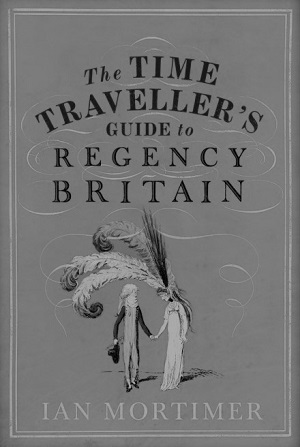|
The Time Traveller's Guide to Chapter One (excerpt) It is the cathedral which you will see first. As you journey along the road you come to a break in the trees and there it is, massive and magnificent, cresting the hill top in the morning sun. Despite the wooden scaffolding at its west end, the long eighty-foot-high, pointed lead roof, with its flying buttresses and colossal towers, is simply the wonder of the region. It is hundreds of times bigger than every other building around it, and dwarfs the stone walls which surround the city. The mass of houses appear tiny, all at chaotic angles, and of different shades and hues, as if they were so many stones at the bottom of a stream flowing around the great boulder of the cathedral. The thirty churches - though their low stumpy towers stand out from the mass of roofs - seem humble by comparison. When you draw closer to the city walls you will see the great gatehouse. Two round towers, each more than fifty feet high, stand either side of a pointed arch, newly built, with a painted statue of the king in a niche above the grand entrance. It leaves you in no doubt about the civic pride of the city, nor its authority. Beyond these gates you are subject to the mayor's jurisdiction. Here reside the king's officers, in the castle on the north-eastern perimeter. Here is a place of rule and order. The high circling walls, the statue of the king, the great round towers and - above it all - the immense cathedral, collectively impress you with their sheer authority. And then you notice the smell. Four hundred yards from the city gate, the muddy road you are following crosses a brook. As you look along the banks you see piles of refuse, broken crockery, animal bones, entrails, human faeces, and rotting meat strewn in and around the bushes. In some places the muddy banks slide into thick quagmires where townsmen have hauled out their refuse and pitched it down into the stream. In others, rich green grasses, reeds and undergrowth spring from the highly fertilised earth. As you watch, two semi-naked men lift another barrel of excrement from the back of a cart and empty it into the water. A small brown pig roots around on the garbage. It is not called Shitbrook for nothing. You have come face to face with the contrasts of a medieval city. It is so proud, so grand, and in places so beautiful; and yet it displays all the disgusting features of a bloated glutton. The city as a body is a caricature of the human body: smelly, dirty, commanding, rich and indulgent. As you hurry across the wooden bridge over Shitbrook, and hasten towards the gates, the contrasts become even more vivid. A group of boys with dirty faces and tousled hair run towards you, and crowd around, shouting, 'Sir, do you want a room? A bed for the night? Where are you from?', struggling between them to take the reins of your horse, and maybe pretending that they know your brother, or are from the same region as you. Their clothes are filthy, and their feet even filthier, being bound into leather shoes which have suffered the stones and mud of the streets for more years than their owners. Welcome to a place of pride, wealth, authority, crime, justice, high art, stench and beggary. The city described above is Exeter, in the southwest of England, but it could almost be any of the seventeen cathedral cities. You could say the same for many of the large towns too, except for the fact that their churches are not cathedrals. Arriving in every one of these places involves an assault on all the senses. Your eyes will open wide at the great churches, and you will be dazzled by the wealth and the stained glass they contain. Your nostrils will be invaded by the stench from the sewage-polluted watercourses and town ditches. After the natural quiet of the country road, the birdsong and the wind in the trees, your hearing must attune to the calls of travellers and town criers, the shouts of labourers and the ringing of church bells. In any town on a market day, or during a fair, you will find yourself being jostled by the crowds who come in from the country for the occasion, who live it up rowdily in the taverns. To visit an English town in the late fourteenth century is a bewildering and extreme sensory experience. A major town is an intimidating place. Already you will have seen the desiccated remains of thieves left hanging on gallows at windswept crossroads. At the principal gates of a regional capital you will find the heads and limbs of traitors on display. When you enter the city of York (the largest city in the north) you will see the blackened heads of criminals stuck on poles above the city gates, their eyes plucked out by birds. Legs and arms hang by ropes, each the relic of a treasonable plot, now riddled with maggots or covered with flies. These remains remind you of the power of the king, a greater and more ominous shadow behind the immediate authority of the mayor and aldermen, local lords, sheriffs and judicial courts. This, you could say, is the landscape of medieval England: a place of fear and decay. But the moment you walk under the shadow of a city gatehouse, you realise it is much more than that. In Exeter, for example, as soon as you enter the great gate of the city, you face the wide and handsome prospect of South Street. Some of the finest houses and inns are here, the gable ends of their steeply angled roofs neatly meeting the street. On your right is the church of Holy Trinity, a cult of special devotion in the late fourteenth century. Further down you have the handsome town house of an abbot. On your left is a row of merchants' houses, some with their shops open, with silks and other expensive fabrics on show inside the covered shop fronts. For a moment you might notice the uneven surface of the road, which is dust, or mud after it has rained. But then you will be distracted by the amount of activity around you. Ponies and packhorses are ambling through the town, towards the marketplace, laden with corn and guided by peasants from the local farms. Priests pass by, robed in their habits, with crucifixes and rosaries hanging from their girdles. Perhaps a black-robed Dominican friar is preaching to the people at the top of the street, watched by a small circle of admirers. Workers are driving their sheep and cattle into market, or steering carts laden with eggs, milk and cheeses towards the line of shops known as Milk Street. The city is so alive, so full of busy people, that within a short while you have forgotten about the decapitated traitors. And Shitbrook's stench is no longer in the air; now there is a remarkable absence of animal dung in the streets. All is revealed in South Street when you see a servant shovelling up horse dung from the area in front of his master's house. As you walk towards the centre of the city, you will encounter more tradersí shops tightly packed together in small street-front premises - sometimes tiny rooms of less than forty square feet - but all with their distinctive projecting signs to tell the illiterate their trade. Some are paintings depicting the items on sale, such as a painted knife indicating the shop of a cutler. Others are three-dimensional objects: a bushel on a pole, showing that freshly brewed ale is available; or a bandaged arm, marking a surgeon's premises. At the top of Smithen Street, which leads down to the river, you can hear the clang of blacksmiths hammering away at their forges, and shouting in guttural voices at their apprentices to fetch water or bring coal. Others in the same street are setting up stalls, hanging out iron wares such as scissors, rushlight holders and knives to attract the attention of those coming in from the surrounding countryside. A little further on you come to Butchers Row, or the Shambles, where the counters of the shops are laden with meat lying exposed in the sun, with joints and carcases hanging from hooks in the shade of the shop behind. Listen to the thunk as the cleaver comes down and strikes the chopping board, and watch as the leather-aproned butcher lifts the red meat on to the scales, balancing it carefully with metal weights until he is satisfied that he, at least, is getting a good deal. It is here, among the city's shops, that your preconceptions of medieval England will begin to fall apart. Walk into the centre of any large town or city and you will be struck by the extraordinary range of costumes, from russet-clad peasants to richly dressed merchants and esquires and their wives, and maybe even a knight or nobleman. Their travelling cloaks might hide the colourful hues of their clothes in grey winter but, in this sunlight, the rich reds, bright yellows and deep blues are shown off, trimmed with furs according to social rank. Similarly the languages and accents you hear in a city give a cosmopolitan air to the place. Foreign merchants are regularly to be found in the greater towns and cities, but even in the smaller ones you will hear both French and English spoken in the street, and occasionally Latin and Cornish. Over the hubbub of the morning's business you will hear the town crier, calling from the crossroads at the centre of the town, or laughter as friends share a joke. Over it all the practised cries of the street vendors ring out as they walk around with trays of food, calling out 'Hot peascods' or 'Rushes fair and green', 'Hot sheep's feet' or 'Ribs of beef and many a pie'. |



